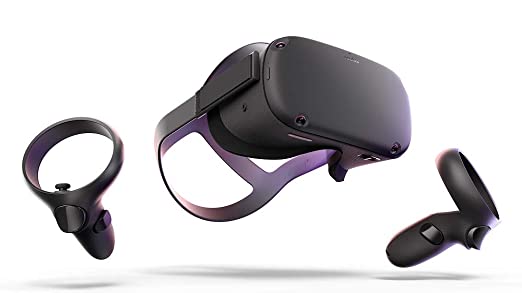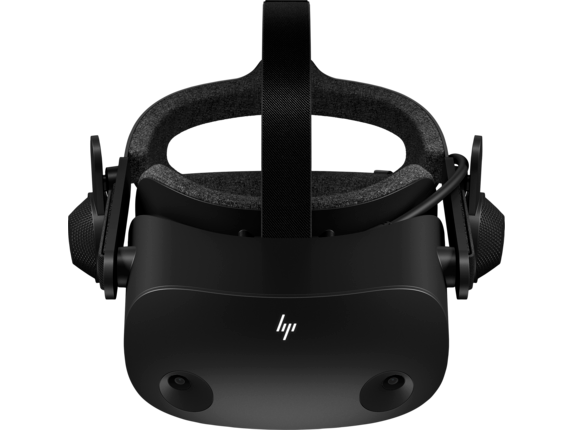Oculus Quest vs HP Reverb G2
When you compare the Oculus Quest to the HP Reverb G2 you can see which VR Headset is better. Let's take a look of the comparison, and see which model of VR Headset out ontop.
What VR Headset is better?
Comparing the Oculus Quest and HP Reverb G2, two popular virtual reality headsets, there are a few important differences to consider.
The Oculus Quest is a standalone headset with a field of view of 95° and resolution of 1600 x 1440 px. It also has room scale tracking, 360 degree tracking and 72 Hz refresh rate. This makes it a great option for those looking for an entry-level VR experience without needing any extra hardware or setup. On the other hand, the HP Reverb G2 is better suited for advanced users who need more detailed graphics and higher performance from their VR headset. The 114° field of view combined with 2160 x 2160 px resolution makes this headset ideal for gamers who require high quality visuals. Furthermore, its 90 Hz refresh rate offers much smoother motion than the Oculus Quest's 72 Hz refresh rate.
In terms of computing requirements, the Oculus Quest requires no additional hardware while the HP Reverb G2 requires an Intel Core i5/i7 or Intel Xeon E3-1240 v5 processor (or equivalent) along with Nvidia GeForce GTX 1080/AMD Radeon RX 5700 GPU (or Professional Workstation: Nvidia Quadro P5200/AMD Radeon Pro WX 8200). For anyone looking to experience high end gaming on their PC, this could be a deciding factor in which headset they opt for.
Finally, both headsets offer 360 degree tracking capabilities so you can move freely throughout your virtual environment without worrying about losing connection to your computer or console system. Although both have similar features in this regard, I found that I had better response times when using the HP Reverb G2 thanks to its faster refresh rate compared to that of the Oculus Quest's 72 Hz refresh rate .
Overall both headsets provide different experiences depending on what type of user you are but if I had to choose one based on my own personal preference it would definitely be the HP Reverb G2 due to its superior visual fidelity combined with higher frame rates and larger field of view that make up for its greater demands on computing power compared to that required by an Oculus Quest
Specs comparison between the two VR Headsets
| Oculus Quest | HP Reverb G2 | |
|---|---|---|
| Overview | ||
| Brand | Meta | HP |
| Model Name | Quest | Reverb G2 |
| Release Date | 2019 | 2020 |
| Country of Origin | United States | United States |
| Category | Standalone VR | Mixed Reality |
| Battery Life | 3 h | |
| Display | ||
| Field of View | 95° | 114° |
| Resolution | 1600 × 1440 px (per eye) | 2160 x 2160 px |
| Refresh Rate | 72 Hz | 90 Hz |
| Display Type | OLED | LCD |
| Minimum Requirements | ||
| Min. CPU Required | Intel i5-4590 or AMD Ryzen 5 1500X or greater | Intel Core i5, i7 or Intel Xeon E3-1240 v5, equivalent or better. AMD Ryzen 5 equivalent or better |
| Min. Graphics Required | Nvidia Titan X GTX 1060 or GTX 1070 or RTX 20 series | Nvidia GeForce GTX 1080 or AMD Radeon RX 5700 or Professional Workstation: Nvidia Quadro P5200 or AMD Radeon Pro WX 8200 |
| Min. RAM Required | 8 GB | 8 GB |
| Operating Systems | Microsoft Windows | Microsoft Windows |
| Sizing | ||
| Weight | 571 g | 550 g |
| Dimensions | 190.5 x 104.14 x 114.3 mm | 186 x 75 x 84 mm |
| Features | ||
| Room Scale? | YES | |
| 360 Tracking? | YES | YES |
| Positional Tracking? | YES | YES |
| Front Camera? | No | YES |
| Eye Tracking? | No | |
| Usable with Glasses? | YES | |
| Cooling System | YES | |
| Built in Headphones? | YES | YES |
| Built in Microphone? | YES | |
| Flip Visor? | YES | |
| Voice Command? | YES | |
| IPD Adjustment? | YES | YES |
| Lens to Eye Adjustment? | No | YES |
| USB? | YES | YES |
| MicroUSB? | no | |
| Display Port? | YES | YES |
| Mini Display Port? | No | YES |
| HDMI? | No | |
| MicroSD? | No | |
| Bluetooth? | YES | YES |
| Wifi? | YES | |

